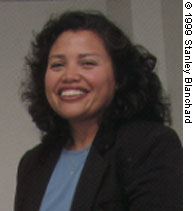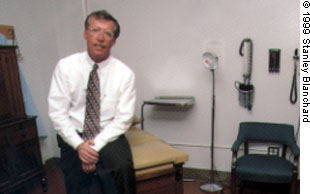
By working together, these part-time physicians are meeting their patients' needs — and their own.
Fam Pract Manag. 1999;6(6):22-24

“I'm a Junior Girl Scout troop leader, and that's actually kind of fun,” says Nancy Sapio, MD. It's not the kind of statement you might expect to hear from a physician, given that the typical physician spends over 50 hours a week in practice. But Sapio isn't typical — and neither are her colleagues. In their New York state practice, no physician works more than 20 hours a week.
“Although there are five providers in our practice, we don't even equal two full-time doctors — that's how part time we are,” says Sapio, co-owner of the practice with Gary Dunkerley, MD, and Denise Lawrence, MD.
The practice employs three part-time family physicians, one part-time nurse practitioner, and one full-time physician assistant. But part-time providers are only half the story. Five out of six nurses in the practice work part time as well.
A little history
Capital Care Family Practice-Monsignor Keane (then called Family Practice Associates) opened in 1991 as the brainchild of three faculty members at St. Clares Family Practice Residency, Schenectady, N.Y. They envisioned the practice, which exists entirely separate from the residency program, as an opportunity for residents to see what an attending practice looks like. In addition, they hoped the practice would help faculty members stay current clinically and give them the satisfaction of caring for their own patients.
Eight years later, this faculty practice is fulfilling its mission and serves as proof that part-time practice can work. One important key, say its physicians, is teamwork. “We know that in order to make this practice run, we truly need to work together,” says Sapio.
In part-time practice, cross-coverage soars to new heights. Not only do the physicians cover for each other on holidays and vacations, they care for each other's patients weekly on their colleagues' scheduled days off. Sapio, for example, works just two half days a week in the practice. Her patients know they can see her during those hours, but on Sapio's days off, her patients with acute problems are seen by other physicians in the practice. Because there's so much cross-coverage, “a practice like this breeds tolerance among its physicians,” she says.
It also breeds its own set of challenges. With physicians available to see patients only part time, “continuity [of care] is always an issue,” says Dunkerley. Yet, even in part-time practice, where a colleague might be covering for you, “your patients are always your own,” he says. As long as group members are sensitive to keeping one another informed of significant patient care issues, continuity of care is maintained. What also helps, he says, is for the primary physician to learn to manage his or her patients efficiently “so that contact with them is fruitful and not redundant.”
“Given the proper setting, with attention to continuity for their patients and colleagues of the same mind, I think it can work,” says Dunkerley.
Patients seem to think it can work, too. “Patients always want to stay with their primary care physician in the practice,” he says, “but they recognize that if they're ill and their doctor isn't available, they may need to see someone else.” When new patients come into the practice, its nurses spend time explaining the system to them so that patients are well informed. So far, the practice has never been short on satisfied patients, and its best referral source has always been word of mouth. “Our patients are very loyal to us,” says Sapio, “and that's actually kind of heartwarming. They know that, even though we work part time, they all have full-time care. Someone is always available no matter what time of the day.”
Despite its physicians' part-time status, the practice operates from 8 a.m. to 5 p.m. five days a week, with a call schedule for evenings and weekends.
Sweet rewards

So what's in it for the physicians? For Dunkerley, it's the chance to do two things he loves. “I have an interest in graduate medical education, and this allows me the flexibility to manage a patient population of 1,500 patients, have my private practice associates back me up when I'm not available and yet still be involved in GME,” he says. “I have something of the best of both worlds.” When he's not working in the practice, Dunkerley is teaching within the residency program, serving as clinical attending for the residents and administering the residency program — and he couldn't be happier with the arrangement.
Lawrence also chose part-time practice because of an interest in medical education. “I didn't want a full-time practice because I also wanted to teach and I wanted to have exposure to the residents,” she says. Outside the practice, Lawrence serves as medical director for the residency's Family Health Center, also a part-time position.
For Sapio, part-time practice offers additional benefits. As a part-time faculty member of the residency program, she enjoys the opportunity to care for her own group of patients in private practice. “There's always the satisfaction of being able to say, ‘This is my patient,’” she says, and then watch the patient progress over the years. She can even boast of a handful of patients that she first treated in residency and still cares for today.
Although Sapio works part time in both private practice and the residency, her combined work hours remain less than full time. She's allowed enough flexibility in her schedule so she can spend more time with her family (and a Junior Girl Scout troop) and enjoy “a much more relaxed lifestyle.” She also suspects that her part-time arrangement makes her less susceptible to physician burnout.
Still, Sapio doesn't recommend part-time practice to everyone. She acknowledges that for physicians just out of residency, who are often bearing the brunt of student loans, part-time practice may not be the best option. But once those obligations are fulfilled, “it's really a quality-of-life issue,” she says. “Do you want to be forever in high gear and let life pass you by, or do you want to slow things down? [With part-time practice] you may not have all the material things you want, but that which you do have you truly enjoy.”
VITALS
Name: Capital Care Family Practice-Monsignor Keane
Location: Schenectady, N.Y.
Type of Practice: Member of a primary care regional group
Staffing: 3 part-time family physicians, 1 part-time nurse practitioner, 1 full-time physician assistant, 6 nurses (5 part-time, 1 full-time)
Practice Setting: Suburban
Payer Mix: 47% managed care, 30% Medicare, 23% other
Editor's note: Drs. Sapio, Dunkerley and Lawrence practice with Laura Lisicki, FNP, and Bradley DeNovio, RPA-C, in Schenectady, N.Y.